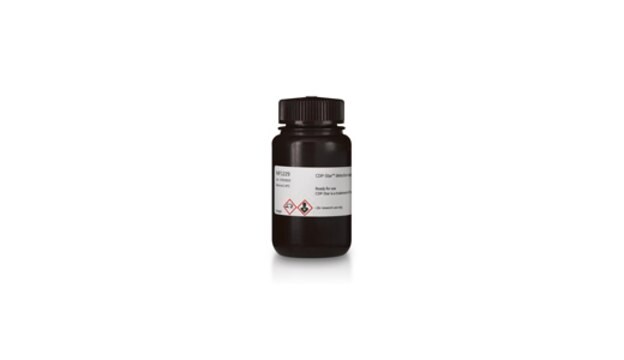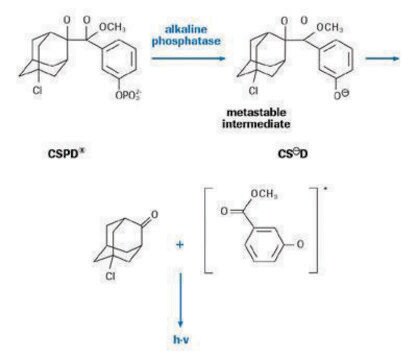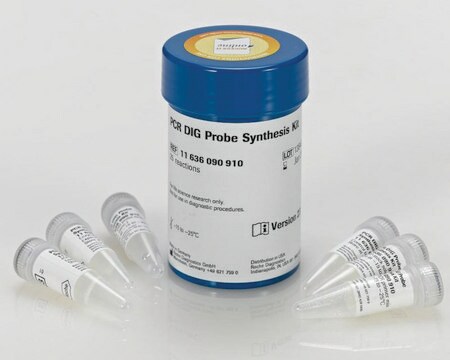12041677001
Roche
CDP-Star®, ready-to-use
>98%, solution, suitable for dot blot, suitable for Northern blotting, suitable for Southern blotting
Faça loginpara ver os preços organizacionais e de contrato
About This Item
Código UNSPSC:
12352204
Produtos recomendados
descrição
Disodium 2-chloro-5-(4-methoxyspiro {1,2-dioxetane-3,2′-(5′-chloro)tricyclo[3.3.1.13,7 ]decan}-4-yl)-1-phenyl phosphate
Nível de qualidade
Ensaio
>98%
Formulário
solution
embalagem
bottle of 2 × 50 mL ([0.25 mM])
fabricante/nome comercial
Roche
técnica(s)
Northern blotting: suitable
Southern blotting: suitable
dot blot: suitable
temperatura de armazenamento
2-8°C
Aplicação
Used for the nonradioactive detection of labeled nucleic acid probes on membrane blots:
- Southern blot
- Northern blot
- Dot blot
- Colony and plaque hybridization
- Gel shift assays
Used for the nonradioactive detection of labeled nucleic acid probes on membrane blots:
- Southern blot
- Northern blot
- Dot blot
- Colony and plaque hybridization
- Gel shift assays
- Chemiluminescent detection.
Características e benefícios
Contents
0.25 mM solution (0.124 mg/ml), ready-to-use, colorless solution
0.25 mM solution (0.124 mg/ml), ready-to-use, colorless solution
CDP-Star is a chemiluminescent substrate for alkaline phosphatase that enables fast, ultra-sensitive detection of biomolecules by producing extremely rapid visible light. Light emission is recorded on X-ray film or on luminescence imager systems.
- Save time with a fast, ultra-sensitive substrate.
- Easily strip and reprobe membranes.
- Take multiple exposures of up to two days for each experiment.
Nota de preparo
Storage conditions (working solution): Washing Buffer: 15 to 25 °C, stable
Maleic Acid Buffer: 15 to 25 °C, stable
Detection Buffer: 15 to 25 °C, stable
Blocking Solution: always prepare freshly
Antibody Solution: 2 to 8 °C
Maleic Acid Buffer: 15 to 25 °C, stable
Detection Buffer: 15 to 25 °C, stable
Blocking Solution: always prepare freshly
Antibody Solution: 2 to 8 °C
Outras notas
- First exposure to X-ray film should be 5-15 minutes. Examine film and then determine other exposure times based on initial result.
- No preincubation step required.
- Apply substrate quickly to avoid gray shadows from substrate drops and drying of membrane (leads to uneven, high background).
- Do not use plastic wrap to cover blot; use hybridization bags, acetate sheet protectors, or two sheets of transparent film.
- Exposure times are shorter than with CSPD.
- Do not use nitrocellulose membranes.
For life science research only. Not for use in diagnostic procedures.
Informações legais
CDP-Star is a registered trademark of Tropix, Inc.
Código de classe de armazenamento
12 - Non Combustible Liquids
Classe de risco de água (WGK)
nwg
Ponto de fulgor (°F)
does not flash
Ponto de fulgor (°C)
does not flash
Escolha uma das versões mais recentes:
Já possui este produto?
Encontre a documentação dos produtos que você adquiriu recentemente na biblioteca de documentos.
Os clientes também visualizaram
Non-Radioactive Detection of Trinucleotide Repeat Size Variability.
Tome S, et al.
PLoS Currents, 6 (2014)
Detection of expanded RNA repeats using thermostable group II intron reverse transcriptase.
Carrell ST, et al.
Nucleic Acids Research, 46(1), e1-e1 (2017)
Evaluation of parameters affecting switchgrass tissue culture: toward a consolidated procedure for Agrobacterium-mediated transformation of switchgrass (Panicum virgatum).
Lin CY, et al.
Plant methods, 13(1), 113-113 (2017)
Ivano Legnini et al.
Nature methods, 16(9), 879-886 (2019-08-07)
Although messenger RNAs are key molecules for understanding life, until now, no method has existed to determine the full-length sequence of endogenous mRNAs including their poly(A) tails. Moreover, although non-A nucleotides can be incorporated in poly(A) tails, there also exists
Omer Choresh et al.
Biomacromolecules, 10(10), 2852-2856 (2009-09-08)
The various silks that make up the web of the orb web spiders have been studied extensively. However, success in prey capture depends as much on the web glue as on the fibers. Spider silk glue, which is considered one
Nossa equipe de cientistas tem experiência em todas as áreas de pesquisa, incluindo Life Sciences, ciência de materiais, síntese química, cromatografia, química analítica e muitas outras.
Entre em contato com a assistência técnica
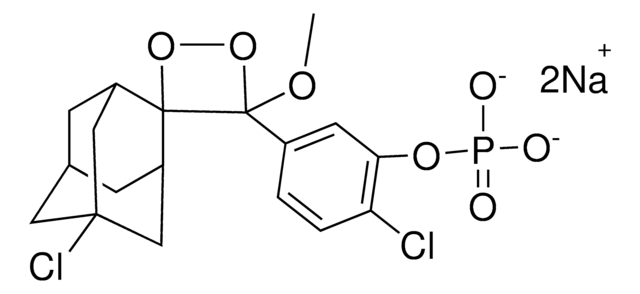
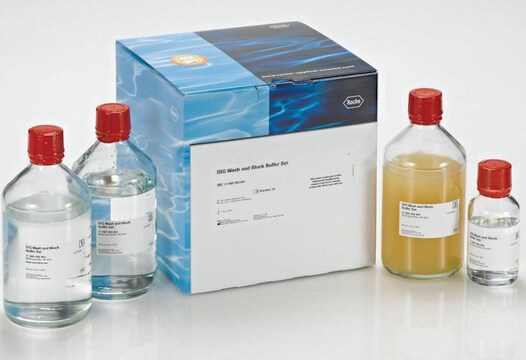
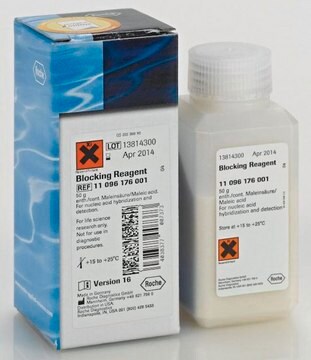
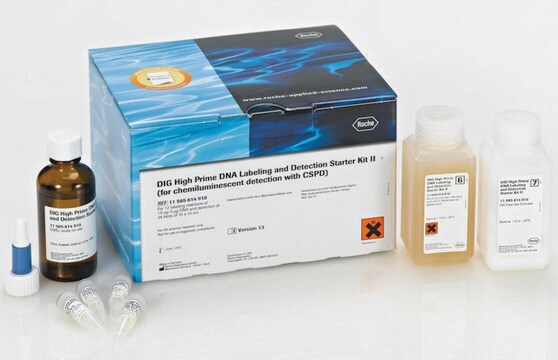
![CSPD ready-to-use Disodium 3-(4-methoxyspiro {1,2-dioxetane-3,2′-(5′-chloro)tricyclo [3.3.1.13,7]decan}-4-yl)phenyl phosphate](/deepweb/assets/sigmaaldrich/product/images/352/091/ef743cea-ccd8-44f1-8f3b-dec5a1e4f5d1/640/ef743cea-ccd8-44f1-8f3b-dec5a1e4f5d1.jpg)
